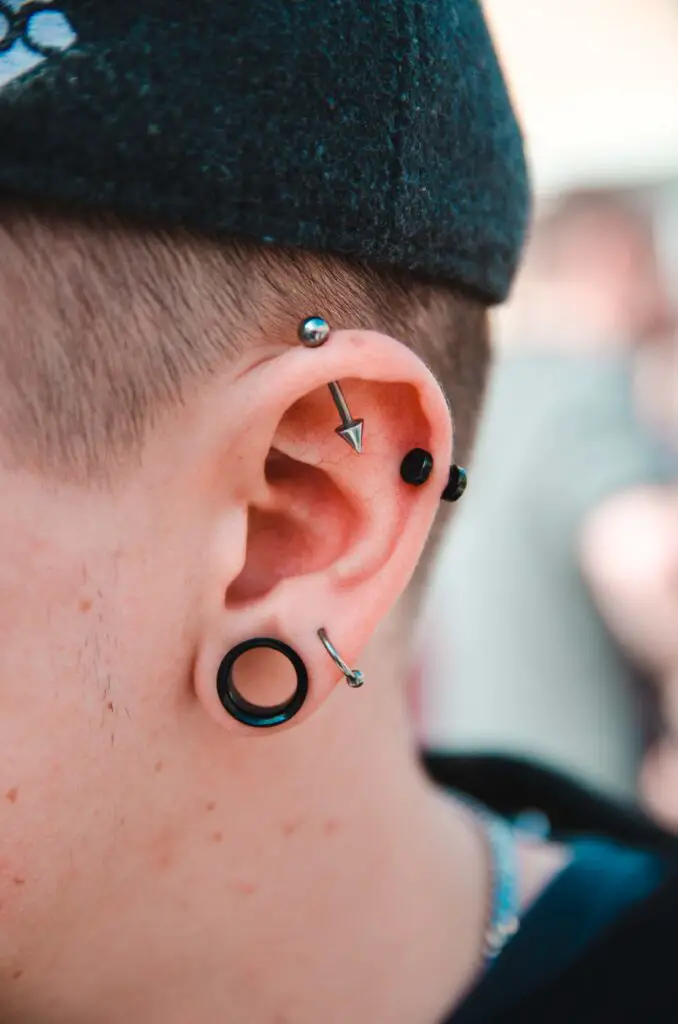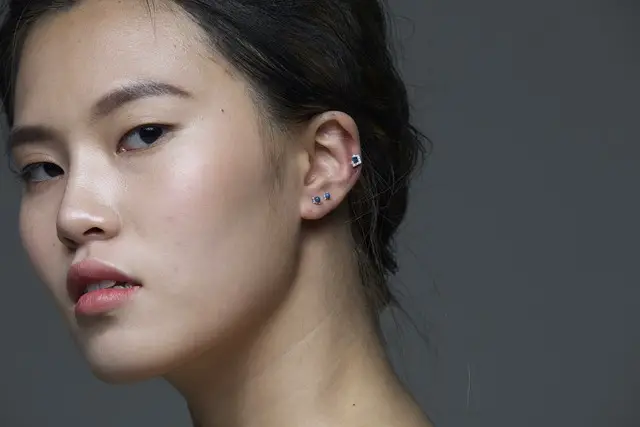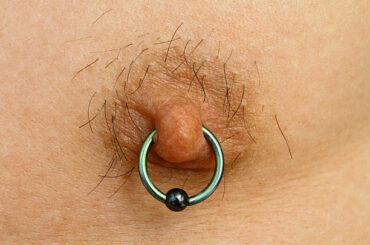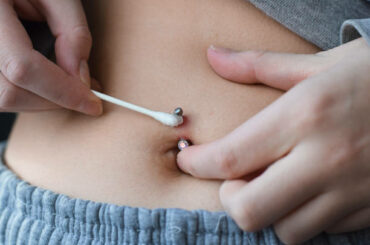Contents
Industrial Piercing Anatomy – Introduction

Industrial piercings have taken the world of body modification by storm due to their striking appearance and potential for personalization. These ear piercings, also known as “bar” or “scaffold” piercings, are characterized by a single piece of jewelry that traverses two separate holes in the ear’s cartilage. To gain a comprehensive understanding of industrial piercings, it’s essential to explore their anatomy, including location, procedure, aftercare, and variations.
Do you have the right anatomy for an industrial ear piercing? : https://m.youtube.com/watch?v=_n1JYn-DCbc&pp=ygUbSW5kdXN0cmlhbCBQaWVyY2luZyBBbmF0b215
Location and Placement:
Industrial piercings are typically situated in the upper ear cartilage, specifically in the helix region. This distinctive piercing style features two holes—one positioned near the top of the ear and the other closer to the side. What makes industrial piercings truly unique is the connection between these two holes using a single piece of jewelry, commonly a straight barbell. The precise placement of an industrial piercing may vary from person to person based on their ear anatomy, preferences, and the piercer’s expertise. Factors such as the angle, distance between holes, and the curvature of the ear are taken into account to ensure both aesthetic appeal and comfort.
Procedure:
The procedure for obtaining an industrial piercing typically follows these steps:
1. Consultation: The initial step involves a consultation with a professional piercer. During this session, the piercer will assess your ear’s anatomy, discuss placement options, and provide detailed information about the procedure, suitable jewelry options, and essential aftercare instructions.
2. Cleaning: Before the piercing, the ear is meticulously cleaned and disinfected. This is a critical step in minimizing the risk of infection during the piercing process.
3. Marking: The piercer will use a sterile pen to mark the precise locations where the two holes will be created. Care is taken to ensure symmetry and alignment with the individual’s unique ear shape.
4. Piercing: Using a sterilized needle, the piercer will create the two holes, typically starting with the helix hole near the top of the ear. This part of the process may cause momentary sharp pain and pressure, which varies from person to person.
5. Insertion of Jewelry: Once the holes are made, a straight barbell, often made of materials like surgical stainless steel or titanium, is gently inserted, connecting the two holes. The piercer may make slight adjustments to ensure that the jewelry sits flat and comfortably on the ear.
6. Final Adjustments: The piercer will make any final adjustments to ensure the jewelry’s proper placement, comfort, and aesthetic appeal.
7. Aftercare: After the procedure, the piercer will provide you with detailed aftercare instructions, which are crucial for the proper healing and maintenance of the industrial piercing.
Aftercare:
Maintaining proper aftercare is essential to facilitate the healing process and prevent complications. Here are some general aftercare guidelines for industrial piercings:
1. Cleaning: Clean the piercing twice a day using a saline solution or saline wound wash to minimize the risk of infection. Avoid using alcohol or hydrogen peroxide, as these can be too harsh.
2. Hands Off: Resist the urge to touch or twist the jewelry, as this can introduce bacteria and cause irritation.
3. Avoid Swimming: It’s advisable to avoid swimming in pools, hot tubs, or natural bodies of water until the piercing is fully healed to prevent infection.
4. Beware of Pressure: Be mindful of clothing, accessories, or headphones that may press against the piercing, as this can cause discomfort or irritation.
5. Patience Is Key: While healing times for industrial piercings can vary, they typically range from 6 months to a year. Patience and diligent adherence to aftercare instructions are essential for a comfortable and safe healing process.
Variations:
While the classic industrial piercing involves two holes connected by a single straight barbell, there are numerous variations and creative possibilities to consider:
1. Orbital Piercing: This variation involves multiple holes connected by a circular piece of jewelry, creating a stunning orbital effect.
2. Industrial Projects: Some individuals opt for more complex industrial projects that involve multiple piercings and various jewelry pieces, resulting in intricate and personalized patterns across the ear.
3. Custom Jewelry: Industrial piercings can be further customized with a wide array of barbell designs, including curved, spiral, or jeweled options, allowing for personalization and style.
Industrial piercings are a captivating and distinctive form of ear modification. They require a deep understanding of ear anatomy, skillful piercing techniques, diligent aftercare, and, if desired, a touch of creative flair through variations and customized jewelry. Consulting with an experienced and reputable piercer is crucial to ensuring a successful and visually striking industrial piercing. Remember that patience and meticulous care are key to a comfortable and safe healing process, allowing you to showcase your unique style with confidence.

Conclusion
In conclusion, industrial piercings represent a unique and captivating form of ear modification that involves a single piece of jewelry connecting two holes in the upper ear cartilage. Understanding the anatomy, procedure, aftercare, and potential variations of industrial piercings is essential for those considering this striking body modification.
The location and placement of industrial piercings in the helix region of the ear create a distinct and bold aesthetic. Precise placement takes into account individual ear anatomy, ensuring both visual appeal and comfort.
The procedure itself involves consultation, cleaning, marking, piercing, jewelry insertion, final adjustments, and comprehensive aftercare. Proper aftercare is vital for facilitating healing and minimizing the risk of complications.
Variations in industrial piercings, such as orbitals and custom jewelry, provide opportunities for personalization and self-expression, making each industrial piercing unique.
In sum, industrial piercings require careful consideration, professional expertise, and dedication to aftercare. They are not only a form of body modification but also a statement of personal style and individuality. By following proper procedures and aftercare, individuals can enjoy the distinctive and bold look that industrial piercings offer while ensuring a comfortable and safe healing process.
More Links:
When Can I Change My Nipple Piercing? A Guide to Safe and Timely Jewelry Swaps:https://shatattoos.com/when-can-i-change-my-nipple-piercing/
Litha Piercing: Exploring a Unique and Stylish Body Modification: https://shatattoos.com/litha-piercing/





